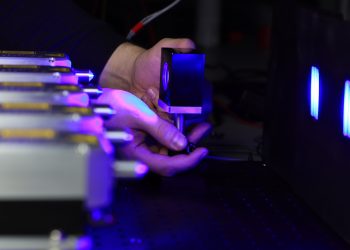We live in a time where electricity is in perpetual need. It’s pretty safe to assume that there are gadgets plugged in around your home that aren’t in use right now, ranging from kitchen counter appliances to extension cords.
Even though these appliances are out of visual range and mind, they continue to consume energy and raise your monthly expenses.
All of the appliances in your home that are plugged in use electricity in little quantities. 1 or 2 two devices may not be a problem, but even when devices are turned off, households can still have tens of connections throwing away electricity.
Does unplugging appliances conserve energy?
The superstition about unplugging appliances to save energy isn’t false at all. Here are some answers to your questions about whether disconnecting appliances conserves electricity.
If you take a fast tour around your house, you’ll be shocked at how so many appliances are plugged in. Even when switched off, many modern devices consume energy. Did you know that even if your phone isn’t plugged in, your phone charger uses 0.3 watts of power?
When you leave your battery-powered phone connected, the power consumption climbs to 2.3 watts. Not only that, but when game systems are turned off, they require considerably more power.
How much electricity is saved by disconnecting electronics?
The amount of money you save by disconnecting appliances is determined by the number and type of appliances you use. Examine each living space and unplug any equipment that isn’t in use.
While you disconnect appliances when they are not in use, the Department of Energy believes that you can save 10% each month. Unplugging appliances can help you save money on electricity, so make it a routine, just like turning off the lights.
Which appliances should I unplug?
When you’re not using electronics or appliances, unplug them. Unplugging appliances while not in use is one of the easiest efficient energy management methods in your house. You are not really giving up anything by wasting electricity since you are not getting any benefit from it.
At home, what consumes the most electricity? When you consider your replies, you’ll probably discover that they’re also the largest electricity suckers. Even though every plugged-in appliance has the potential to waste energy, the following are the most common troublemakers:
Computers and laptops
Even when turned off, some devices need a little amount of power. Put them in hibernation mode and unplug them.
Televisions and video game consoles
Most television sets and gaming consoles are mostly, in fact, on standby rather than being turned off. This is done so that you can continue from where you left with your activity.
However, that minor convenience might cost you a lot of money. Consider disconnecting them if you haven’t used them in days or hours.
Kitchen appliances that are little
Disconnecting appliances after each use, even though they are energy-efficient devices, is a healthy habit unless you use them numerous times a day, day in and day out.
Chargers for mobile phones
Normally, phone chargers do not consume quite as much electricity as other gadgets. However, because they are usually left plugged in almost all of the time, they sometimes become severe energy parasites over time.
Decorative lighting and lamps
Older bulbs don’t use energy when they’re turned off, but newer types with features like noise activation do.
Advantages of unplugging appliances
Lower your energy use. It is impossible for something to use electricity if it is not connected. As a result, the amount of watts you use each month is reduced.
Protect your electronics against power spikes
When appliances are turned off, they can’t be harmed by power surges generated by lightning, power cuts, or other grid pressures. You keep your house protected against a power surge by unplugging.
Electrical fires should be avoided at all costs
When devices are in good operating order, the threat of fire is minimal. Appliances, on the other hand, do not always keep in good operating order.
Micro-surges, which stress their circuitry over time, can harm them. A short can take place at any time, resulting in a fire. It’s just another reason to disconnect useless electronics.
Make equipment and devices last longer
Your gadgets will gradually wear out if you use electricity frequently. Disconnecting your devices should not only consume less electricity but also extends their usable life.
Utility Bidder is a ground-breaking service provider that ensures consumers get the ideal gas and electricity rates for their commercial energy needs. Be sure to check them out in the UK.
How can I figure out which gadgets use the most power?
Although energy usage numbers for appliances are frequently accessible, utilizing an electricity monitor is the best method to get a sense of actual electricity usage.
Electrical monitors are a low-cost approach to figuring out which electronics use the most energy and which use the least.
Simply connect one to a socket before connecting the device to the monitor. If you enter your energy unit price, you can calculate how much electricity is being sucked, how many watts it uses, and what the item costs to function.
It won’t be that hard for you to figure out which appliances are cost-efficient and which will be used minimally or switched when not using them.
A monitor can show you an insight into an appliance’s power usage, but it may also show you how much it costs to run it throughout time. You might be shocked at how much power a single device consumes daily or weekly.
Many methods can be taken to lower the number of wasted power utilized in your house, but the first step is to recognize that it is occurring. It’s preferable if you disconnect or physically switch off as many gadgets as possible.
Not only should your electricity expenses decrease, but if everyone follows the same efforts, the country’s electricity needs can be decreased as well.
Conclusion
The issue is that a single device will not make a significant difference. A TV always being on standby, for example, may only run you a few bucks each year.
Of course, multiplying those several amounts by the number of other gadgets you end up leaving connected in, including chargers, quickly adds up to a considerable sum.
Take a gander around the building at all the devices you can see connected — I can see 15-25 different gadgets that are connected in my field of view.
A year’s worth of electricity for 15-25 gadgets is $30 to $50 ( multiplied by $2). $2 isn’t a significant sum of money, but $50 or even more? It’s easy to see why unplugging the items we don’t use every second is a good idea.
Discover more from Today Headline
Subscribe to get the latest posts to your email.















